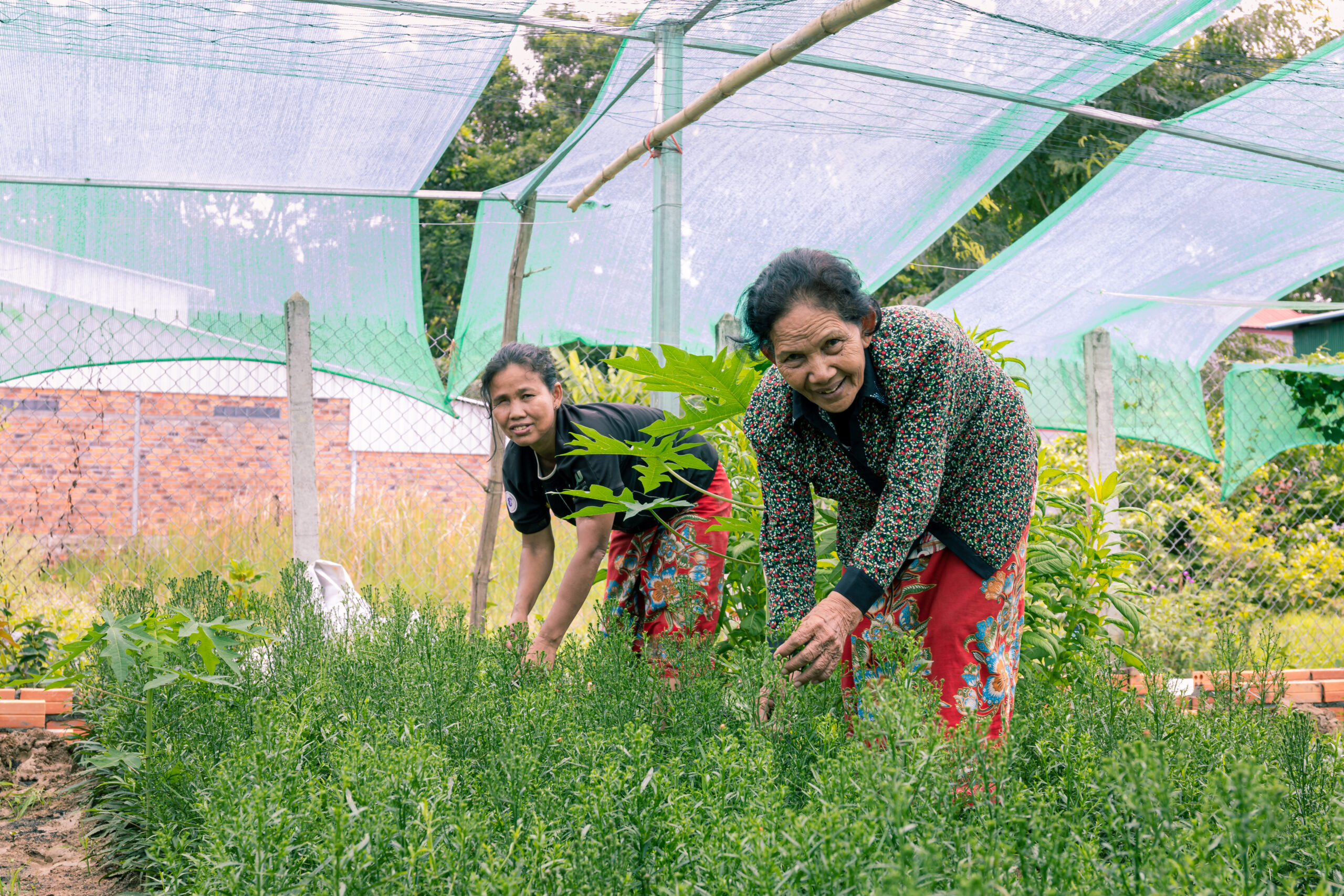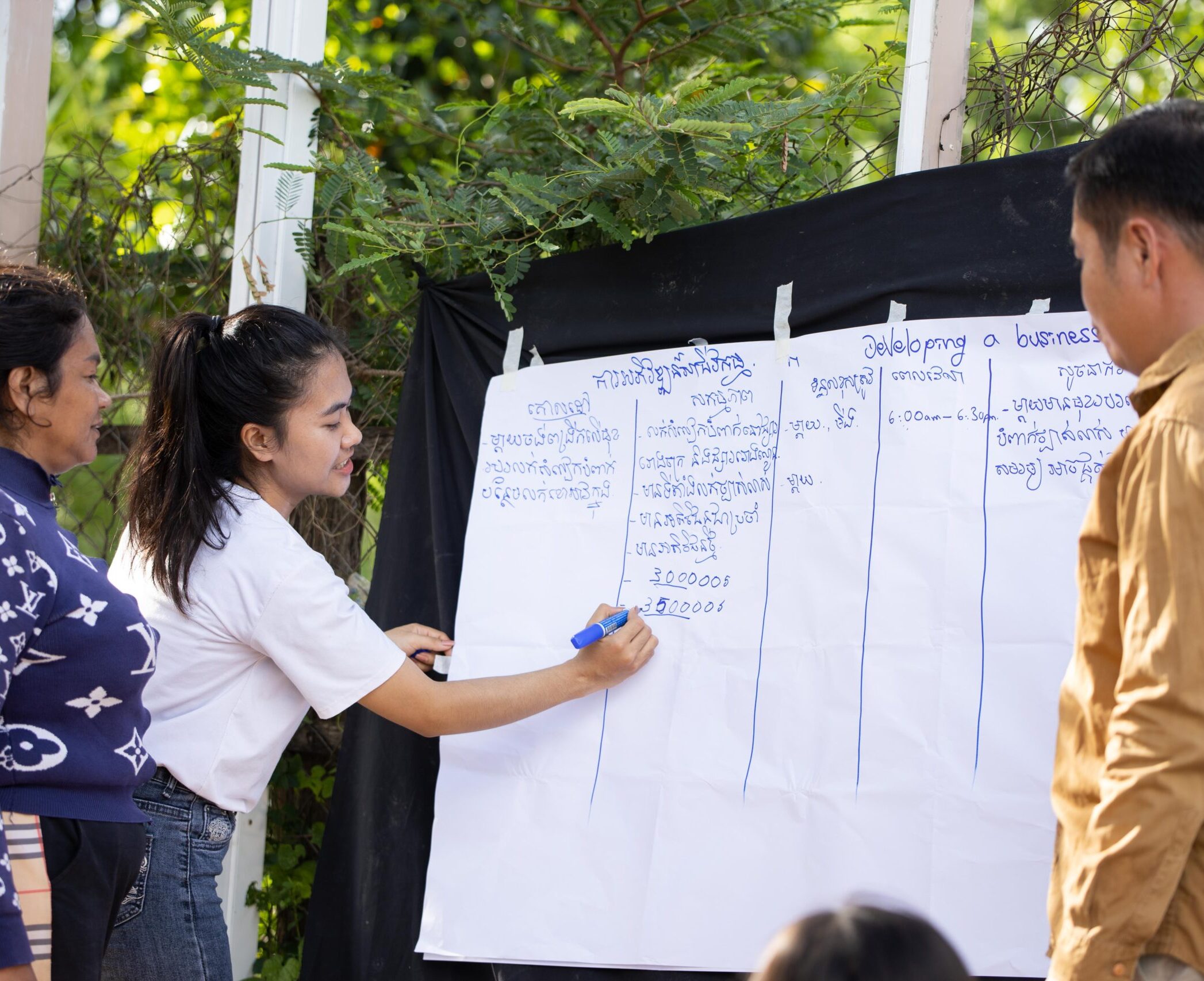Back in 2015, you could deposit $100,000 in a reputable charity Microfinance Institution (MFI) such as World Vision’s microfinance entity Vision Fund and receive interest on that money of up to 25%. What an attractive deal this seems on the surface. You can empower families to break free from the poverty cycle while also making a profit yourself! If it seems too good to be true, that’s because it is.
In the 1990’s, microfinance was heralded as the silver bullet to alleviate poverty in the Global South. However, 30 years on it has achieved little more than entrap impoverished families in a vicious debt trap.
In Cambodia, microfinance has grown into the world’s largest and most profitable privately-owned microfinance sector. More than two and a half million Cambodians, one in five adults, currently hold microloans, with an average loan of more than $3,800 – the largest amount in the world. This puts millions of Cambodians’ livelihoods, health, and land tenure security at risk. The country also now has one of the highest rates of microfinance debt in the world relative to personal income, which amplifies the economic hardship faced by millions of Cambodians with more than $10 billion in loans from microfinance institutions (MFIs).
Despite these concerning outcomes, the MFI sector is still growing. Between 2000 and 2020, the number of people borrowing from MFIs has increased from 175,000 to 2,6 million people with the average loan increasing from around $3,000 to $4,000. By the end of 2021, Microfinance levels reached US$4,213 per capita, which equates to more than double the GDP per capita.

Most of Cambodia’s largest MFIs are supported or owned by foreign banks, investment firms and foreign charities, who have pressured and coerced Cambodia’s poorest families with false promises, extracting hundreds of millions of dollars in profit. This profit is not being reinvested locally into the Cambodian economy. Instead these profits are siphoned out of the poorest communities and sent overseas to wealthy investors who have been richly rewarded.
Some MFIs in Cambodia have reported annual returns on equity exceeding 25%. In 2020, even as the pandemic devastated Cambodia’s economy, six of the country’s eight biggest microfinance companies posted record earnings. LOLC Cambodia posted a record net profit of $45.4 million in 2020, up 33% from the previous year. Its return on equity that year was 28%, more than three times the average for commercial lenders in Cambodia. Despite reports about abusive practices, it has received more than $25 million from French and Norwegian development banks since 2020.
MFI’s in Cambodia have become one of the world’s largest markets per capita. They report that defaults on loans are very low, (non-performing loans are reported at less than 2%) because they require collateral on loans as a method to manage financial risk for their foreign investors. Cambodia is one of the only countries that requires microfinance borrowers to post collateral such as land titles as guarantee against default repayments. The value of the land often exceeds the amount of the loan. Some MFIs devalue land used as collateral by 50 to 75 percent as a matter of policy. They claim that they rarely sell off borrowers’ assets because desperate families are coerced to sell their land themselves if they are unable to service their loans for fear that MFIs will sell at submarket values. MFIs rely on their borrowers’ accessing loans from private money lenders to keep their Non-Performing Loan ratio as low as possible. This results in a false economy, with borrowers taking out additional loans to make repayments to MFIs, falling further into an indebtedness crisis.
One reason why microloans have not proven to be as universally effective at spurring entrepreneurship as imagined is because they rest on a flawed assumption that individuals will use the money from loans to become entrepreneurs.
The escalation of debt levels means that households are taking microfinance loans not simply to use as productive investments that generate income, they are using new debts to continue the chain of repayment on other loans. Loans are being increasingly taken up by households that have significant outstanding credit/debt relations with a variety of formal and informal sources.
Cambodia lacks many social services, such as public health care and schooling, and MFI loans are increasingly used to subsidise costs that are crucial to a healthy and dignified life. If families are taking out loans to cover basic needs that are a fundamental human right, can these loans really be considered voluntary with both parties freely agreeing without any duress? The loans often become a catalyst for harmful “coping strategies” that are necessary to ensure repayments, including borrowing and/or working more, eating less, selling assets including homes and becoming homeless, debt bondage including leaving farming to work in brick kilns, migration to Thailand as low-skilled labourers, child labour with children being forced to drop out of school to work to help increase family income increasing their risk of exploitation and trafficking.

U.S. officials were so concerned about borrowers in Cambodia losing their homes that many argued against subsidising microlenders that accepted land titles as collateral, stating that “it is unethical to create secured lending to the poor based on mortgages or land titles because the poor, by definition, can’t repay.”
Still, investors keep pouring into Cambodia. The World Bank’s International Finance Corp (IFC), arranged $425 million in loans in the past two years to three microlenders implicated in land sales.
Some Government oversight of the industry does exist. MFIs in Cambodia are required to register with the National Bank of Cambodia, the country’s central bank, which in December 2021 stopped issuing new licenses and told institutions to improve the “quality, efficiency and affordability” of their services. When the National Bank of Cambodia imposed an 18% rate cap in 2017, lenders increased loan sizes and tripled commission fees, to offset the interest income loss.

Microfinance is not the silver bullet or panacea of poverty that it was heralded to be. It primarily serves the interests of elite stakeholders who unwittingly refer to themselves as “social impact investors”, to the detriment of the poorest communities in the world.
The capital flowing into MFIs from the international development community would have a far greater and more sustainable impact if it was redirected to systems change work that strengthens public social services and welfare safety nets.
CCT’s Village Hive offers a far more ethical and sustainable way forward. It strengthens public health and education services to prevent families from becoming vulnerable, and it provides early intervention to families who are already vulnerable to prevent them from falling into crisis. A part of this multi-step early intervention journey is focused on covering the costs of basic needs while empowering families with financial literacy, business coaching, and capital (not loans) to establish sustainable livelihoods with a robust savings program.
CCT donors understand that addressing global inequality means donating without expectation of financial return. Instead, they are rewarded with the altruistic pleasure of a genuine social return of seeing some of the most impoverished communities in the world lift themselves out of poverty.
The Village Hive early intervention journey has proven to be successful for families – meaning several years on after completing the journey families are still enjoying their financial freedom. This success would not be possible, however, if we expected that these families who have worked so hard to climb out of abject poverty, then spend years attempting to pay back their loans. This is because successful behaviour change becomes a very challenging prospect when the rewards are only reaped far into the distant future.
Ultimately, the Village Hive is a systems change initiative. The main reason why the Village Hive is proving so successful in lifting communities out of poverty is because, unlike microfinance, it doesn’t focus on the individual but on the system. Poverty is not a personal failing but the structural failings of social systems.
The fact is, there is no silver bullet for global poverty and any solution that promises easy, quick fixes to poverty ignores the complex systemic nature of the problem. But we can take the lessons learnt from the mistakes of microfinance to take genuine steps to move the needle on global poverty.
By investing development funds into community-driven initiatives that shift power to local people, giving them sovereignty over their own development, we can work to change the systems that create poverty and inequality in the first place.